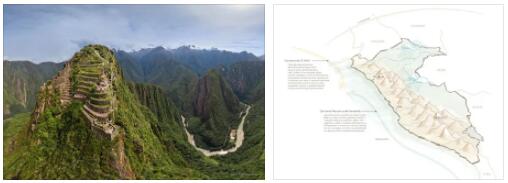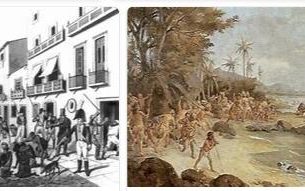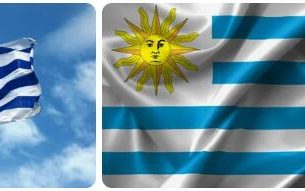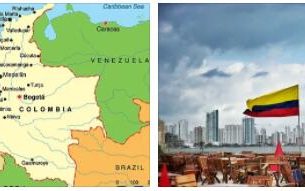General information about Peru
The official name is the Republic of Peru (Republica del Peru, Republic of Peru).
Located in the western part of South America. The area is 1285 thousand km2, the population is 25.6 million people. (2000). The official languages are Spanish and Quechua. The capital is Lima. National holiday – Independence Day on July 28. The monetary unit is the new salt.
Possessions: the islands of Lobos de Terra, Lobos de Afuera, Guanyape, Chao, Santa, Blanca, Independencia, San Lorenzo, Chincha, Sanguian in the Pacific Ocean. The total area is 9354 km2.
Member of the UN (since 1945), OAS (since 1948), etc.
Geography of Peru
It is located between 68°40′ and 8Г54′ west longitude and 0°10′ and 18°20′ south latitude. It is washed from the west by the Pacific Ocean with the cold Peruvian (Humboldt) current. The length of the coastline is 2414 km. Bays – Sechura, Independencia. The peninsulas are Paracas and Ferrol.
In the north it borders on Ecuador (the length of the border is 1420 km) and Colombia (2900 km), in the east – on Brazil (1560 km), in the south – on Bolivia (900 km) and Chile (160 km).
According to natural conditions, Peru is divided into three zones: coastal (Costa) – 12% of the territory, mountainous (Sierra) – 27%, wooded (Selva) – 61% of the territory. They are divided into regions: the northern part of the Costa is formed by the Sechura desert; the central and southern parts stretch in a narrow arid ribbon (up to 80 km) between the Coastal Cordillera and the ocean; the mountainous country begins with the Condor Cordillera.
Western Cordillera (altitude over 6 thousand m) is replete with volcanoes: active – Soliman (6117 m), Misti (5821 m), etc.; extinct – Huaskaran (6768 m), Koropuna (6425 m), Ausangate (6384 m), etc.
Intermountain plateaus and plateaus 3000-4000 m high in the south form a large semi-desert plateau – Punu. Here, in the south, the Altiplano intermountain depression stands out with the high-altitude lake Titicaca (Peru owns only the western part of the lake). In the northern part of the Costa there are many short rivers flowing into the ocean (Pyura, Santa, Tumbes, Chira). In Pune, the internal drainage basin of Lake Titicaca stands out. Most of the Sierra and Selva rivers are part of the Amazon river system, its main source is the Marañon River, along with its tributaries Huallaga and Ucayali.
The soils of the Costa and the western slopes of the Andes are infertile. In the mountainous region in the north and east, mountain-steppe soils predominate, in the southeast – characteristic of semi-deserts.
The flora of the Costa is not rich, on the western slopes of the Andes – shrubs and cacti. In the north and east of the Sierra steppe vegetation prevails, in the south – reed thickets. The selva is distinguished by evergreen forests with rubber-bearing plants and cinchona.
The fauna of Costa on land is poor (jaguar, puma, Azar fox). The world of sea birds is abundant on the islands and the water kingdom is rich (shellfish, shrimps, different types of fish, especially anchovies). In the Sierra, there are representatives of the genus of llamas – guanaco and vicuña, many birds. Lake Titicaca abounds in fish (especially trout). Peccaries, tapirs, anteaters, many monkeys, especially many birds (toucans, parrots, hummingbirds), reptiles and insects are found in the Selva.
According to Bridgat, there is little precipitation on the coast, usually in the form of fog (garua). Temperatures +15°—25°С. In the Sierra it is humid (up to 1000 mm per year). Temperatures in the north are +12°—16°С with average daily fluctuations, in the south — +5°—9°С. On the eastern slopes of the Andes in the Selva, up to 3000 mm of precipitation falls annually, temperatures – + 24 ° -27 ° С.
Peru has always stood out for its wealth of minerals, especially gold, silver, copper mines, reserves of iron ore, mercury, tungsten, and manganese. There are salt mines, coal deposits. Guano reserves are depleted.
Population of Peru
Population growth for 1995-2000 was 1.7% per year. Birth rate 24.33%o, mortality 6.13%o, infant mortality 45.0 people. per 1000 newborns. Peruvians aged 0-14 years make up 34.5% of the population, 15-34 years old – 35.7%, 35-49 years old – 16.3%, 50-64 years old – 8.8%, 65 years and older – 4 .7%. The urban population is 72.3% of the population, rural – 27.7%. Average life expectancy is 69.1 years, incl. men 66.9, women 71.4 years. 88.7% of adults can read and write (including 94.5% of men and 83% of women). 30% of the population lives in the Costa zone, 58% in the Sierra and 12% in the Selva.
Ethnic composition of the population: Indians 45% (Quechua, Aymara, mainly in the Sierra and Lima-Callao; along the banks of the Amazon and its tributaries in Montagna – jibaro and other tribes from the Tupi and Arawak groups), mestizos – 37%, Creoles, North Americans and Europeans – 5% (mainly in the Costa zone), Japanese, Chinese, Africans – 3%. The majority of the population speaks Peruvian Spanish, the Indians are bilingual, but many speak only Quechua, Aymara and other Indian languages. In recent years, even in the Costa zone, there has been a revival of Indian languages.
The vast majority of the population belongs to the Roman Catholic Church, but in the Lima-Callao area, the proportion of Protestants, especially Pentecostals, has recently increased markedly.



